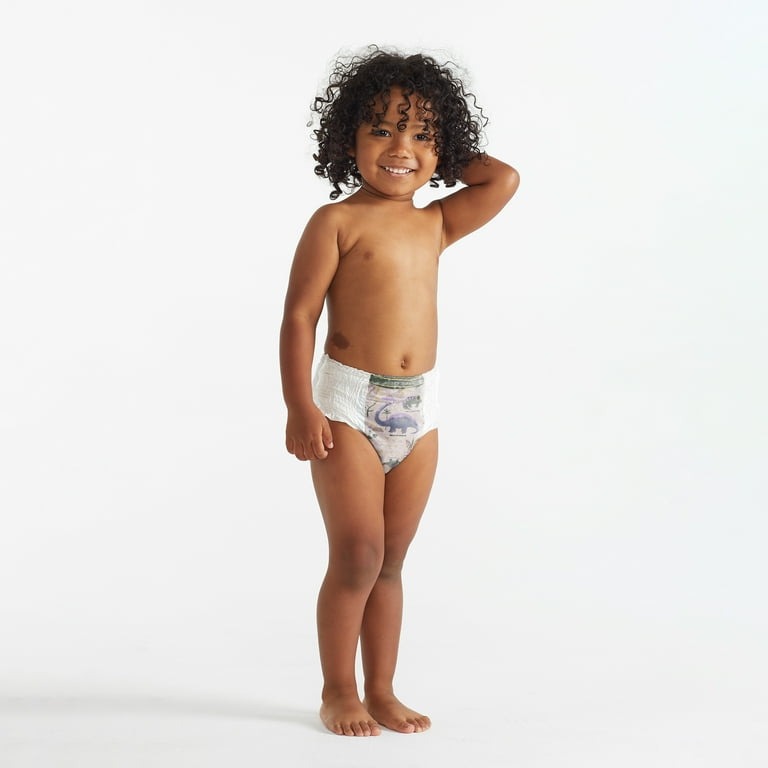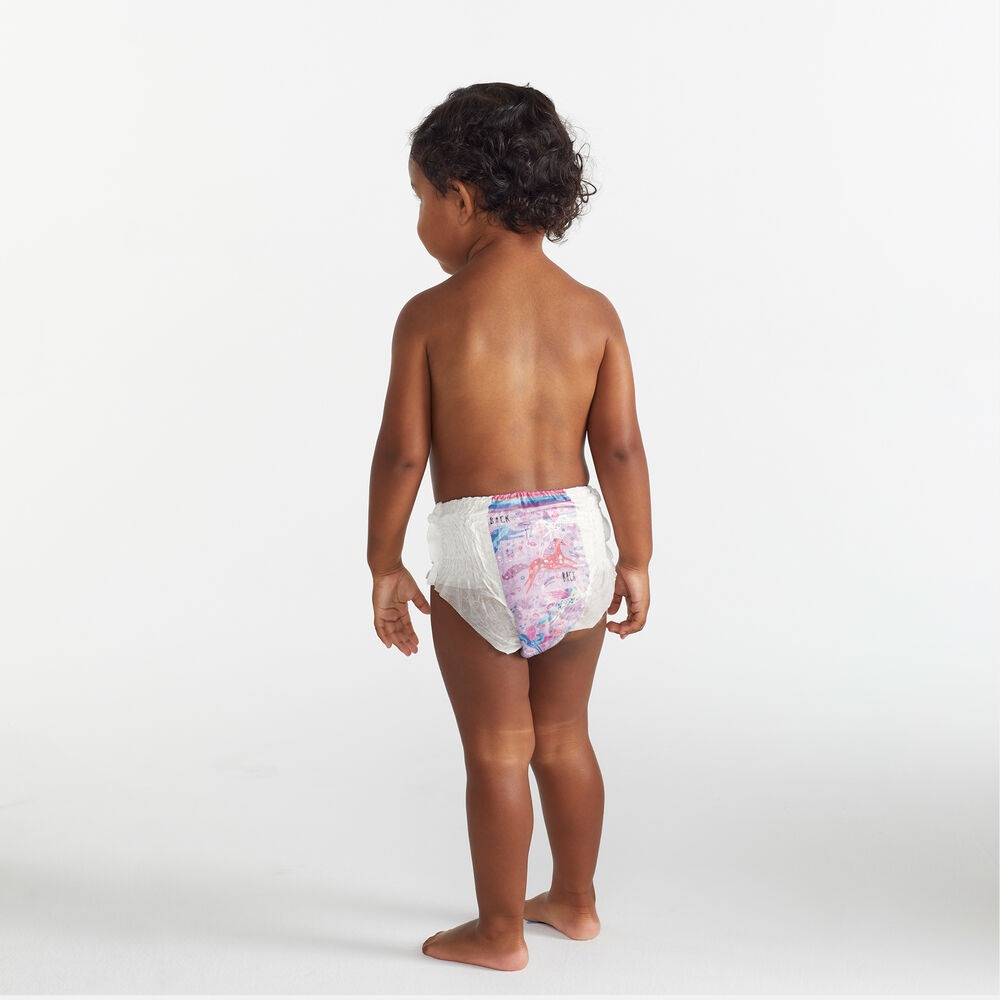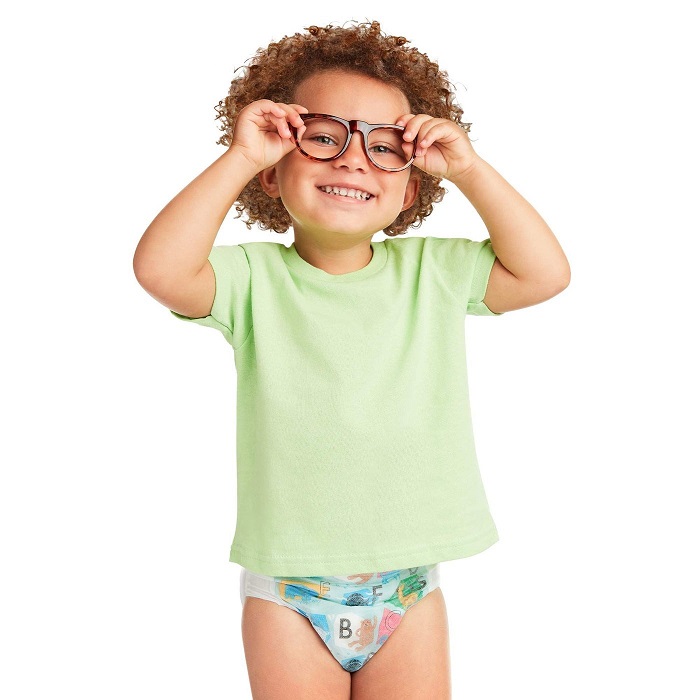Introduction to Disposable Training Pants
Transitioning from diapers to disposable training pants is a significant step in a child’s development. Disposable training pants, often resembling regular underwear, offer the independence toddlers crave while providing the leak protection parents rely on. Unlike diapers, these pants encourage a child’s awareness of wetness due to their design. Most products feature tear-away sides for easy removal, especially useful during potty training mishaps.
While often mistaken as an equivalent to diapers, training pants serve a specific purpose. They bridge the gap between diaper dependency and full potty-training readiness. Many come with fun patterns and characters, making them appealing to young children. The elasticized waistbands and stretchable fabric fit snugly, allowing kids to pull them up and down independently. This promotes self-reliance in toddlers as they learn to manage their bathroom needs.
In this introduction, we’ll delve into the various benefits and considerations of using disposable training pants. We will explore when it’s appropriate to make the switch and how to choose the right product. Moreover, we will offer tips for a smooth transition and address common questions and concerns parents might have. So, let’s begin the journey towards successful potty training with the help of disposable training pants.
Benefits of Using Disposable Training Pants
Disposable training pants offer several advantages that make them an attractive option for parents and toddlers alike. One of the most significant benefits is the ease of potty training. These pants allow children to feel the sensation of wetness, which is crucial for potty training success. Unlike diapers, which absorb wetness and hide the sensation, training pants promote the child’s understanding of their bodily functions.
Another advantage is the boost to a child’s independence. With elastic waistbands and stretchable material, children can easily pull the pants up and down. This independence can improve their confidence and self-esteem as they learn to use the potty on their own. Moreover, disposable training pants are designed to mimic real underwear, which helps toddlers to transition into regular underwear more smoothly.
Safety and convenience are further benefits. The tear-away sides of disposable training pants make them easy to remove quickly during accidents. This convenience is particularly appreciated during outings or travel. Additionally, the snug fit provides leak protection, giving parents peace of mind when away from home.
Finally, disposable training pants can be more motivating for toddlers. Many feature fun designs and characters, enticing children to wear them. These engaging designs can make children more excited about potty training and eager to wear ‘big kid’ pants. Overall, disposable training pants offer practical and psychological benefits that contribute to a more positive potty training experience.
When to Make the Switch: Recognizing the Signs

Recognizing the right time to switch to disposable training pants is crucial for your child’s progress. Here are some signs to help you gauge whether your toddler is ready:
- Interest in the Potty: The first sign is often a curiosity about the toilet. Your child may follow you to the bathroom or express a want to wear ‘big kid’ underwear.
- Dislike for Wet Diapers: If your child dislikes the feeling of a wet diaper and wants a change quickly, it’s a sign they may be ready for training pants. This discomfort suggests they are aware of their bodily functions.
- Ability to Communicate: Your toddler should be able to tell you when they need to go. Key phrases include ‘I need to pee’ or ‘It’s potty time.’ Clear communication is important for using training pants effectively.
- Staying Dry for Longer: Notice if your child stays dry for two hours or more during the day. This indicates better bladder control, which is necessary for the switch.
- Consistent Bowel Movements: If your child has a regular poop schedule, it’s easier to anticipate potty breaks. This routine reduces accidents when wearing training pants.
- Pulling Pants Up and Down: If your child can pull their pants up and down without help, disposable training pants will be easier for them to use.
- Shows Independence: Look for signs of independence in other activities. This self-reliance is essential for successful potty training.
Remember to look for these signs consistently. Toddlers may show them in varying degrees, and not all children will be ready at the same age. Trust your judgment and consult with your pediatrician if you’re unsure. Making the switch to disposable training pants is an exciting step forward and should be a positive experience for both you and your child.
How to Choose the Right Disposable Training Pants
Choosing the right disposable training pants is key for a smooth transition. Here are factors to consider:
- Size and Fit: Ensure the training pants fit snugly but comfortably. They should not be too tight or too loose.
- Absorbency Level: Pick pants with sufficient absorbency to prevent leaks.
- Material Comfort: Look for hypoallergenic and soft materials to avoid irritation.
- Ease of Use: Training pants with stretchy sides are easier for toddlers to manage.
- Designs and Patterns: Fun designs can motivate your child and make potty training more appealing.
Remember to try different brands and styles to find what works best for your child. Each toddler is unique, and their needs can vary. Be patient and allow for some trial and error to ensure both comfort and confidence as they learn.
Tips for Successful Transition from Diapers to Training Pants

Transitioning your child from diapers to disposable training pants can be smooth with the right approach. Here are some effective tips to support you and your toddler during this significant milestone:
- Positive Reinforcement:
Celebrate small victories. Praise your child for each successful potty trip. Reward charts and stickers can boost their motivation.
- Consistency is Key:
Keep a regular routine for potty breaks. Consistency helps your child learn faster and recognize patterns in their bathroom habits.
- Stay Calm During Accidents:
Accidents happen. Stay calm, offer reassurance, and keep it light. Frustration can set back progress.
- Involve Your Child:
Let your child choose their own disposable training pants. Involvement can increase excitement and cooperation.
- Practice Runs:
Have your child practice pulling training pants up and down. This builds confidence and independence.
- Clear Explanations:
Explain why the switch is happening. Discuss the importance of using the potty in simple terms.
- Lead by Example:
Let your child see that using the toilet is normal. Older siblings can also serve as role models.
- Expect Regression:
Sometimes setbacks occur. Know it’s part of the process and stay supportive. Patience is essential.
Using these tips will help embed the confidence and skills your child needs as they make the switch from diapers to disposable training pants.
Environmental Considerations of Disposable Training Pants
The use of disposable training pants raises some environmental concerns. These concerns center on sustainability and the massive waste produced. When discussing disposable training pants, it is crucial to address the impact they have on our environment. Regular diapers already add significantly to landfills, and training pants contribute similarly. They are often made of materials that take hundreds of years to decompose. This fact alone urges parents to consider the ecological footprint of their choices.
Parents increasingly seek eco-friendly options. Manufacturers have noticed and some now offer biodegradable or partially biodegradable training pants. These eco-conscious products break down more readily, reducing their environmental impact. However, they might be less widely available or costlier. Another step parents can take is to limit the use of training pants to necessary times, such as during outings or at night.
Cloth training pants are a reusable alternative, but they come with added laundry duties. While they reduce waste, they demand more energy and water for washing and drying. Parents must balance convenience with environmental responsibility. Whichever option you choose, consider the broader implications. Making eco-friendly choices can instill early lessons in responsibility and conservation for your child.
Comparing Brands: What Sets Them Apart
When selecting disposable training pants, not all brands are created equal. Distinct features and qualities can influence your choice. Here’s a comparison guide to help identify what sets them apart:
- Material Quality: Some brands use premium, soft fabrics. Others may feel less comfortable. The right material prevents rashes and irritation.
- Fit and Comfort: Each brand designs their training pants differently. Good fit ensures comfort and prevents leaks.
- Absorbency Levels: Brands vary in how much liquid they can hold. Higher absorbency is better for overnight use.
- Eco-Friendliness: Certain brands focus on environmental impact, offering biodegradable options. Eco-friendly choices can cost more, though.
- Designs and Characters: Kids might prefer fun, colorful patterns. Brands with popular characters might appeal more to children.
- Ease of Tear-Away: Training pants should have sides that are easy to tear. This feature is helpful during accidents. Some brands make tear-away sides stronger than others.
- Price Point: Costs can differ greatly. Price does not always mean better quality, so compare features.
In summary, when perusing brands, look for high-quality materials, the right fit, sufficient absorbency, eco-friendly options, attractiveness to children, tear-away sides that function well, and consider the price for the value offered. Try samples where possible to find the best fit for your child’s needs.
Common Questions and Concerns About Training Pants

When parents consider switching to disposable training pants, they often have questions and concerns. Understanding these can ease the transition and ensure parents make informed decisions for their toddlers. Here are some common questions addressed in a straightforward manner:
- Will training pants hinder potty training?
No, they won’t. Training pants can actually aid in potty training by teaching toddlers about wetness.
- How many training pants will I need?
The number varies. Start with a small pack and adjust based on your child’s progress and needs.
- Can training pants be used overnight?
Yes, they can. They provide leak protection for uninterrupted sleep but encourage nighttime training.
- Are they suitable for all-day use?
Limited use is better. Full-day reliance may delay potty training as it resembles diaper usage.
- Do training pants cause rashes?
Not usually. Choose hypoallergenic options to minimize any risk of skin irritation.
- Will my child become too dependent on them?
Not if used correctly. Gradually reducing reliance on training pants encourages toilet use.
- How do I know when to stop using them?
When your child consistently stays dry and uses the potty, it’s time to transition.
- What if my child resists wearing training pants?
Involve them in the selection process, and explain the benefits in a way they understand.
By addressing these queries, you can feel more at ease with the decision to use disposable training pants and better support your child’s development. Remember to reassess your child’s needs as they grow and achieve new milestones in potty training.





